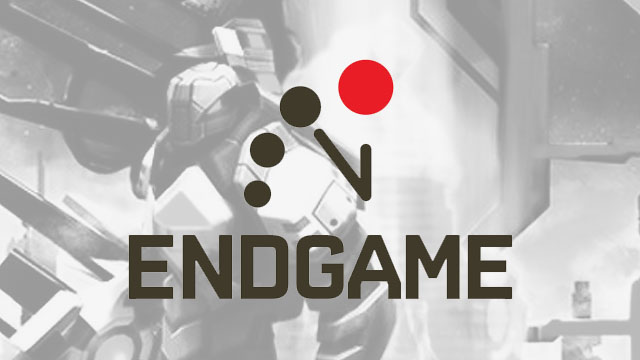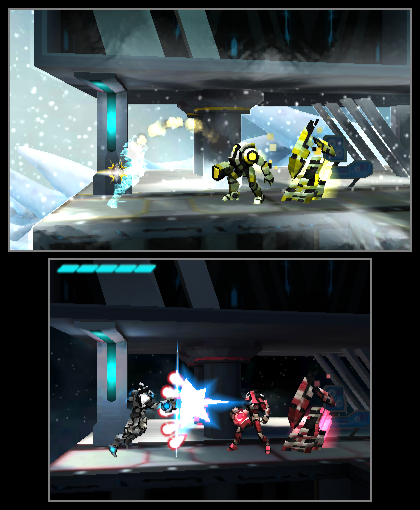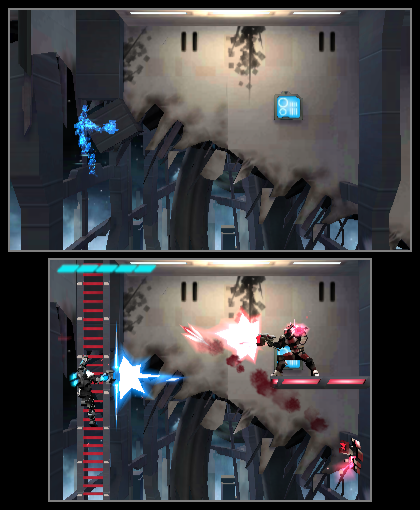 I recently caught up with Endgame Studios managing director Grant Davies, to quiz him on Endgame’s new and insanely difficult platformer, Fractured Soul. I asked him whether he’d expected anything different from Fractured Soul‘s lengthy development and publication process, how letting go feels after eight years, and what makes Endgame Studios keep charging for the hardcore audience when the rest of Australia is all afire for mobile devices. Fractured Soul arrives on Nintendo eShop tomorrow, on September 13, 2012– and judging by our review, it’s pretty awesome.
I recently caught up with Endgame Studios managing director Grant Davies, to quiz him on Endgame’s new and insanely difficult platformer, Fractured Soul. I asked him whether he’d expected anything different from Fractured Soul‘s lengthy development and publication process, how letting go feels after eight years, and what makes Endgame Studios keep charging for the hardcore audience when the rest of Australia is all afire for mobile devices. Fractured Soul arrives on Nintendo eShop tomorrow, on September 13, 2012– and judging by our review, it’s pretty awesome.
Andrew Hsieh: What were the major goals behind Fractured Soul?
Grant Davies: We wanted to take a genre which we’re all very much into, and bring something new to the table– but in a way that still made it a fun and interesting experience– it had to be a game that we ourselves would want to play. We are fans of good platform games, and when the DS was first revealed we started thinking about what it would mean to have a platform game on both screens– what new gameplay mechanisms would open up and would they be exciting to engage with? After prototyping it, we felt it held a lot of promise so we set out to make an entire game based on that concept.
AH: Given the many ways it portrays the “fracturing” concept, as well as its high difficulty, Fractured Soul seems to invite comparison with other recent indie platformers. Did any other unlikely influences inform Fractured Soul?
GD: Fractured Soul was originally inspired by the shmup game Ikaruga. When we first invented Fractured Soul in 2004, we’d heard nothing about the indie platform games that are around today; it was still a largely forgotten genre. When Braid was released, we thought it may breathe new life into the genre, and it did: now there are many good indie platform games around. Not many recent games have gone the direction of Fractured Soul– it is very much an homage to the 80s style classic platform games– Mega Man, Castlevania, Metroid and even Mario. Mega Man meets Ikaruga is probably a reasonable approximation of the game.

Fractured Soul revolves around some serious mental gymnastics. It’s literally dual-dimension platforming.
AH: What features of Fractured Soul do you believe push the platforming genre? Were any left out?
GD: When we started, the duality nature of Fractured Soul was certainly new to the platforming genre. These days there are various games that have approach duality in platforming, though none have done it in the way that Fractured Soul does, so hopefully gamers still feel it is a fresh and interesting approach to platforming. Speed running is not entirely new to the platforming genre, but it’s certainly something we wanted to incorporate into the core game with online leaderboards– rather than it being something gamers have to explore outside the game, we wanted to encourage gamers to engage with the game in this way.
One feature we had in at one point was the ability to move the camera around with the touch screen, and I don’t think that has been done before. The idea was to locate secrets and different ways through the level through exploration. Ultimately, though, we felt was too much of a gimmick rather than adding to the experience, so we cut it out and all the puzzles that were using it.
AH: How has the design process of Fractured Soul changed during the past eight years? Were there any major paradigm shifts?
GD: Initially it was a much slower paced game, aimed more at a younger audience, and with more of a puzzle focus. This stemmed from a fear of targeting a mature gamer audience on DS– we didn’t think publishers would be interested in pursuing this demographic. When we didn’t have much luck finding a publisher anyway (or rather, when deals fell apart), we decided to just do the sort of game we really wanted to play ourselves, and made it much more action-oriented, faster and with a more mature theme. We also went through several level design iterations during that time– in fact, we scrapped the first world entirely on two occasions before we settled on its final design.

Fortunately, there are plenty more levels where that came from.
AH: After eight years, Fractured Soul’s finally going to be out there. How did you keep yourselves motivated, and how does it feel to finally let go?
GD: It feels great, but at the same time there’s a lot of nervousness about just how it will be received. When you spend so long working on something, you can certainly lose some objectivity. We spent a lot of time deliberating about the difficulty of the game, and we still don’t really know whether gamers will say it’s too easy or too hard. It is the sort of thing that’s easy to tweak but difficult to get just right. Staying motivated can be really tough at times, particularly when a publishing deal has fallen through or the studio is going through hard times. We always held onto the dream that the game would one day see a release– this turned out to be a very powerful motivator.
AH: While Endgame Studios is one of many Australian developers, it’s one of the remaining few that would produce a game like Fractured Soul, as opposed to mobile casual games. Did that environment ever tempt you to develop for mobile instead? Why do home consoles continue to pique your interest?
GD: We did try. We released a product on the App Store to try to shore up our cash reserves to keep Fractured Soul alive. And although it was well-received, it’s very difficult to make money in that environment. I think part of the problem is that we didn’t know who we were selling to. Whereas with hardcore content, we know who we’re selling it to because it’s us. We buy this type of game ourselves, so it’s easier to get inside the head of the consumer. I think after trying various other options, we came to the conclusion that we naturally prefer hardcore games, and all our designs gravitate towards hardcore concepts. We have tried to design casual games but they all end up as hardcore designs by the end– so we figure, why fight it?
You are right that we’re a dying breed in Australia, and I think that’s a shame. I really hope Australia can get back on its feet and start producing content for home consoles again– but at this stage all the support and interest surrounds smartphone and casual development here so it does seem unlikely. I can’t really explain what it is about traditional games that pique our interest– probably it’s a deeper, more engaging experience than the average smartphone game. I often feel when playing an iPhone game that it is trying to trick me into spending more money on it, and I think that cheapens the experience. It says to me that the designer has that as the goal rather than the game mechanic itself.
AH: How was par calculated? I’m nowhere near par on “Remorse,” [an early stage of Fractured Soul] for instance …
GD: Well– par may not be the right word, but it was a standard thing that gamers would recognize. Certainly the “par” times in Fractured Soul are aggressive– but they are like this in order to give people something to aim at on the journey to speed running the levels. It was calculated based on our fastest speed runs plus a certain percentage of error.
AH: Anything else you want to mention about Fractured Soul?
GD: Only that it hits the North American eShop on September 13!
Fractured Soul releases on Nintendo eShop on September 13, 2012 for $11.99. Read our review of Fractured Soul here.




 ShareThis
ShareThis






